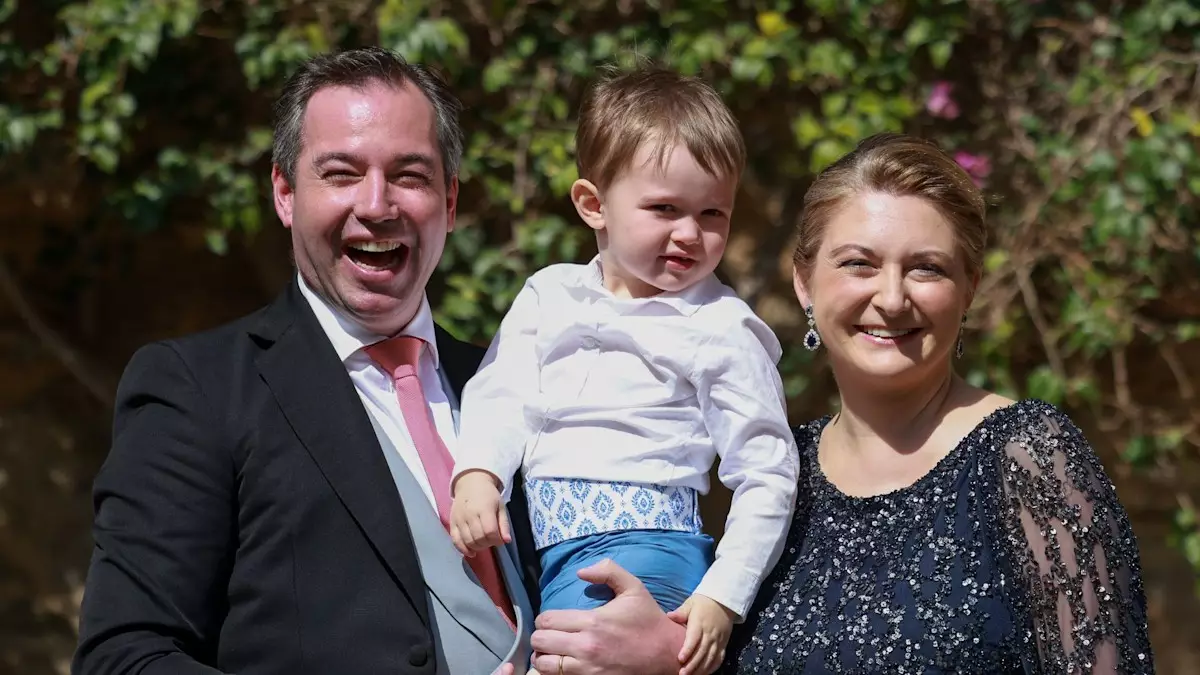Recently, Prince Charles of Luxembourg stepped into the public eye, marking a significant milestone in his royal journey. The young royal, who has been relatively shielded from the limelight since his birth in 2020, participated in his very first official duty alongside his parents, Hereditary Duke Guillaume and Hereditary Duchess Stéphanie. Held at the inauguration of the “Prënz Charles School,” the event signifies more than just a royal outing; it reflects the beginning of a new chapter for the Luxembourgish monarchy as preparations are underway for a generational transition.
This inauguration was no small affair. It not only introduced Prince Charles to his future role but also emphasized the royal family’s commitment to education and community development. Amidst bustling festivities, the young heir was seen actively engaging in various events, including the ceremonial ribbon-cutting—a moment that trivializes royal obligations for a parent but highlights their essence for a child. At such an early age, Charles’s curiosity shone brightly, particularly when he spotted a train painting on the school’s wall. Moments like this infuse nostalgia and warmth, reminding the public that despite the crown’s weight, Royals can embrace simple joys.
The Symbolism of Royal Engagement
Prince Charles’ appearance resonated deeply with the people of Luxembourg, not only due to his status but also because it connected generations. The “Prënz Charles School,” named in his honor, stands on grounds associated with his father’s childhood. This connection symbolizes continuity and the royal family’s roots within the community. The visit not only provided a platform for commemorating the school’s establishment but also reaffirmed the monarchy’s ongoing relevance in Luxembourgish society.
Equally touching were the interactions between Prince Charles and the schoolchildren. His gentle exchanges, from signing the registry book to receiving gifts from eager students, painted a picture of genuine connection between royalty and the public. Events like these strengthen the bond between the monarchy and the citizens, showcasing that the royal family is not just a distant entity, but part of everyday life and milestones.
Preparing for the Future
As Prince Francis prepares to follow in his father’s footsteps with the potential abdication of Grand Duke Henri in 2025, this inaugural event was not merely a nod to tradition but a pivotal moment of transition for future responsibilities. The evolution from passive observer to active participant in royal duties is an important rite of passage for young royals. In public appearances, the royal family’s layers of responsibility may often seem daunting, but they nurture the heir’s growth into savvy leadership.
The decision by Grand Duke Henri to appoint Guillaume as Lieutenant-Representative underscores a strategic approach toward future governance. It allows the younger Duke to gain firsthand experience while the Grand Duke gradually steps back. This foresight reflects modern monarchy’s adaptability, ensuring that the public remains engaged and confident in the leadership’s evolution.
While images from the event proliferate across social media, momentous occasions like Prince Charles’ royal debut remind us that, despite the official weight of the crown, there will always be a childlike innocence at its core, making it easier to believe in the monarchy’s continual relevance and vitality in Luxembourg and beyond.

Leave a Reply